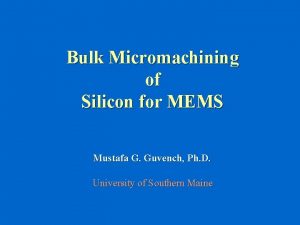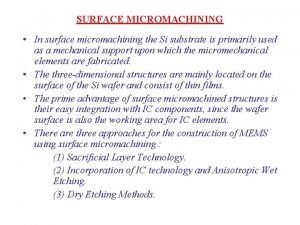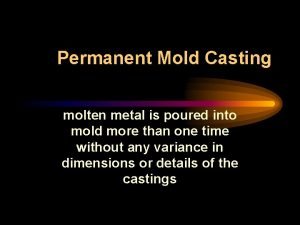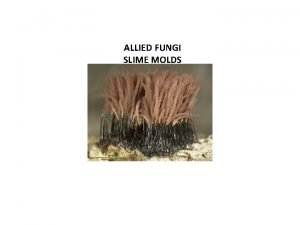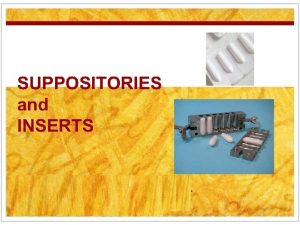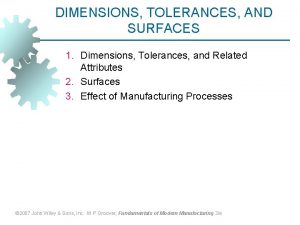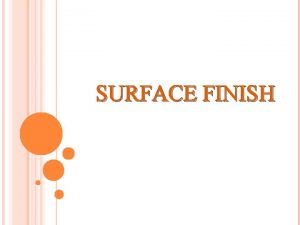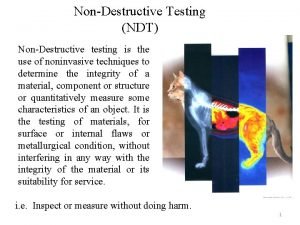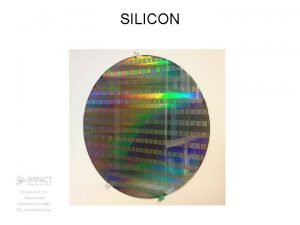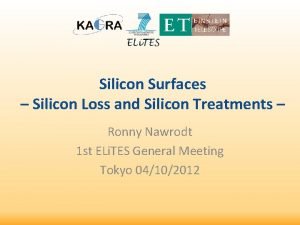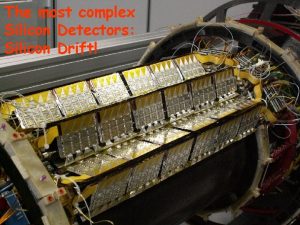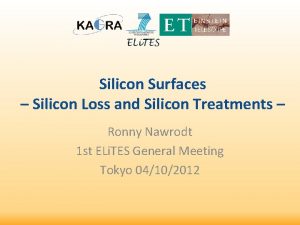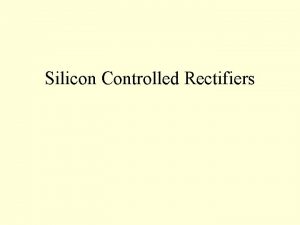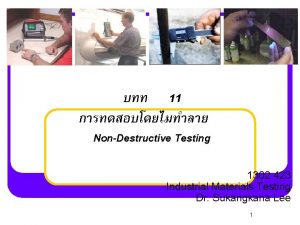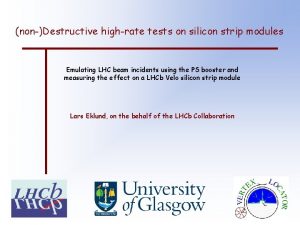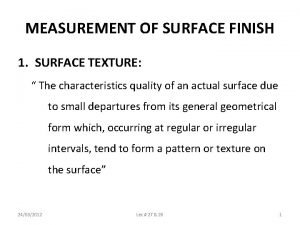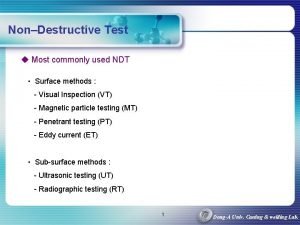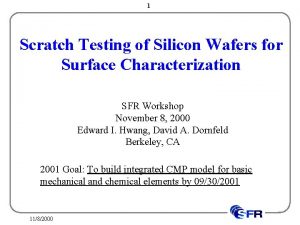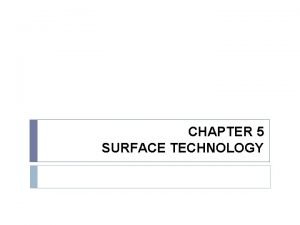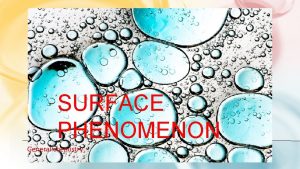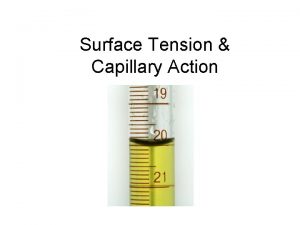Exploring Silicon Molds in Nondestructive Surface Finish Testing

























- Slides: 25

Exploring Silicon Molds in Nondestructive Surface Finish Testing Juan Takase Northwestern University


Outline • • Background on ADMX Problem with higher frequencies Surface Roughness Moldstar 15

Background

What is the Axion? • Proposed particle by the Peccei–Quinn theory to resolve the strong CP problem in quantum chromodynamics. • Possible dark matter candidate • coupling to electromagnetism

How do we find it? • Exploit the coupling to electromagnetism • Axions turn into photons in a magnetic field • Must amplify the signal and reduce noise to properly detect (cryo, single photon detectors)

Axion Dark Matter e. Xperiment (ADMX) • Microwave resonator in multi-tesla magnetic field • Scan frequency range by tuning the fundamental frequency of the cavity


3 Parameters of interest • Magnetic Field (~10 T) • Temperature (~10 m. K) • Q factor (10^5 - 10^6)

Current Experiment • Uses Copper • Works very well at lower frequencies • May be limited at higher frequencies. Resistivity becomes significantly high due to skin effect • Suggest using a different material for future experiments

Enter Aluminum Electrical conductivity (10. E 6 Siemens/m) Electrical resistivity (10. E-8 Ohm. m) Thermal Conductivity (W/m. k) Thermal expansion coef. 10 E-6(k-1) from 0 to 100°C Copper 58, 5 1, 7 401 17 8, 9 1083 Aluminium 36, 9 2, 7 23, 5 2, 7 660 Conductivity: The degree to which a specified material conducts electricity *We want this large Density (g/cm 3) Melting point or degradation (°C)

Why Use Aluminum?

Motivation 1 • In High Magnetic field, Aluminum achieves a lower resistivity at low temperatures

Motivation 2 • At Low temperatures of the same high purity, Aluminum achieves a lower resistivity

Systematic Comparison • We wish to gather as much information bout the behavior of aluminum to properly compare it with copper.

Surface Roughness The deviations in the direction of the normal vector of a real surface from its ideal form. If these deviations are large, the surface is rough; if they are small, the surface is smooth.

How do we measure? Keyence microscope cannot see inside the small cavity without cutting the surface.

Moldstar 15 • We propose to make a silicon mold to allow us to measure and compare the inside surface roughness of the cavities without cutting into the cavity.

Goals • Consistency between molds. • Sensitive to changes in Roughness. • Agreement with true roughness.

Results • Mold sample standard deviations as small as 0. 35 microns • Changes in finish resulted in changes in roughness calculated. • Mold measurements consistently more rough than true image

Consistency Roughness vs Batch 8 7 Roughness (micron) 6 5 Ra 4 Rq Ra avg 4. 9 3 Rq avg 6. 6 2 1 0 1 2 Batch 3 4

Conclusions • Moldstar 15 can reliably show changes in surface finish, but is not a good representation of the true roughness of the surface.

Future Work • Resurface cavities and retest for Q factor to ascertain correlation between surface roughness and Q factor.

Thanks • Supervisors: Katsuya Yonehara, Daniel Bowring, Andrew Sonnenschein, Aaron Chou • Fellow sidet interns: Chiara P. Salemi, Christopher Cameron, Gabe Rizzo, Shwetabh Tarun • Donna Hicks, Yulia Trenikhina

Questions?
 Weld destructive test
Weld destructive test Introduction to nondestructive testing
Introduction to nondestructive testing Silicon surface micromachining
Silicon surface micromachining Micromotor
Micromotor Graphite permanent mold casting
Graphite permanent mold casting Protoplasmodium
Protoplasmodium Blow molding advantages and disadvantages
Blow molding advantages and disadvantages Fungi autotroph or heterotroph
Fungi autotroph or heterotroph Conjugated fungi
Conjugated fungi Diverse diverse
Diverse diverse Superficial mycosis
Superficial mycosis Protista is unicellular or multicellular
Protista is unicellular or multicellular Calibration of suppository molds
Calibration of suppository molds Custom molds inc
Custom molds inc Cellular vs plasmodial slime molds
Cellular vs plasmodial slime molds Slip casting mold making
Slip casting mold making Surface finish symbols
Surface finish symbols Surface finish symbol
Surface finish symbol Software domain examples
Software domain examples Language testing
Language testing Domain testing in software testing methodologies
Domain testing in software testing methodologies Apa itu black box testing
Apa itu black box testing Rigorous testing in software testing
Rigorous testing in software testing Static testing and dynamic testing
Static testing and dynamic testing Control structure testing in software testing
Control structure testing in software testing Motivational overview of logic based testing
Motivational overview of logic based testing


